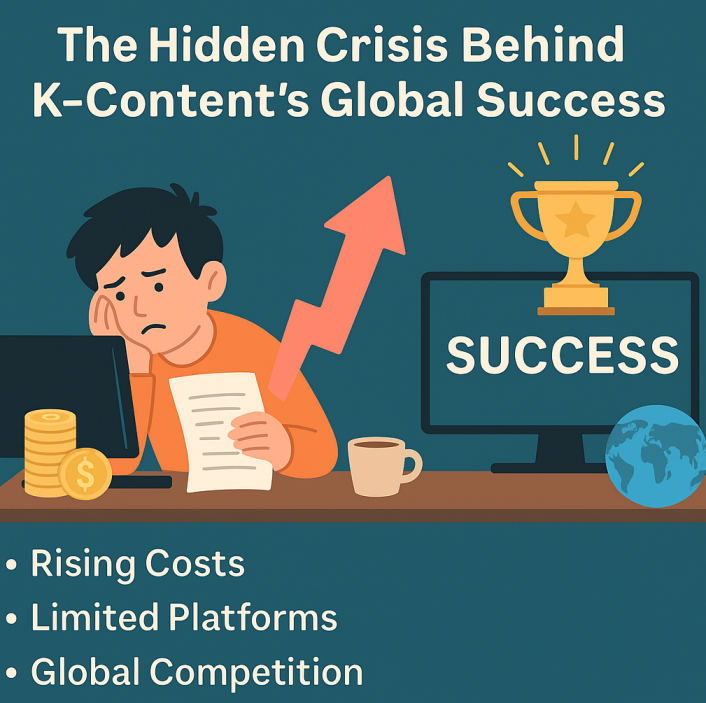Korean content is hotter than ever. Korean dramas top Netflix charts, and K-POP and Korean variety shows dominate YouTube. Audiences around the world are captivated by Korean storytelling and emotion.
However, behind this success, the creators themselves are feeling a sense of crisis. Global popularity is rising, but production conditions are growing more difficult.

🎥 The Collapse of Broadcasters and OTT Monopoly
In the past, terrestrial and cable broadcasters were the primary distribution channels. Today, global OTT platforms, especially Netflix, have become the only viable routes for content.
Domestic OTT platforms like Tving and Wavve remain unprofitable, and even when they produce original content, viewer response is weak. On the other hand, uploading content to Netflix instantly triggers global reactions, social media buzz, and wide exposure.
As a result, production companies have become heavily dependent on Netflix, and distribution power is becoming concentrated.
While this structure has improved some old industry practices, it has also created a “ladder of survival,” where only the chosen few thrive.
🎬 The Decline of the Film Industry
The root of Korea’s creative ecosystem lies in its film industry. But as theaters collapse, the momentum for film production is vanishing. Blockbusters drawing over 10 million viewers are rare, and overall audience numbers are shrinking. This leaves many directors and crews without a stage.
💰 Rising Costs and Creator Struggles
As K-content gains global competitiveness, production costs — from actor fees to equipment and labor — have skyrocketed. Even with Netflix’s major investments, there is a limit to how many shows they can fund each year. Countless other creators are left out, struggling without opportunities.
🌍 Local Industry Under Global Pressure
This isn’t just Korea’s problem. With OTTs taking over content distribution globally, the competition has become a worldwide race.
Even in the U.S., giants like Disney+, HBO Max, and Amazon Prime are fiercely competing, and even Disney is grappling with profitability issues.
Korean producers now face not only domestic but global competition.
🚨 The Creative Ecosystem Is Shrinking
Netflix may be delivering global hits, but the question remains: Is the overall creative ecosystem healthy?
As more creators are excluded from major platforms, they are pushed out of the market — narrowing the entire creative pipeline.
Korea was once known for affordable yet high-quality content. But with its transition to a high-cost model, it must now seek a new balance.
🧭 What’s the Solution?
- Strengthen IP-Based Revenue Models: Move beyond Netflix-style one-time contracts; ensure producers receive long-term royalties.
- Differentiate Domestic OTTs: Rather than mimicking Netflix, focus on niche genres and build dedicated user communities.
- Diversify Content Formats: Experiment with short-form, interactive, and YouTube-style content beyond traditional 1-hour dramas.
- Joint Public-Private Investment in Creation: Support small-scale experimentation and new talent, not just blockbusters.
✅ Conclusion: High Popularity, Fragile Ecosystem
K-Content is one of the most influential cultural products in the world today. Yet, creators are increasingly losing ground.
Rather than chasing short-term profits, the focus must shift to long-term survival strategies and the restoration of a healthy, inclusive creative ecosystem.